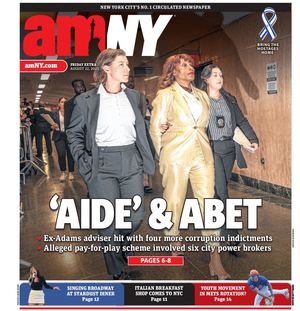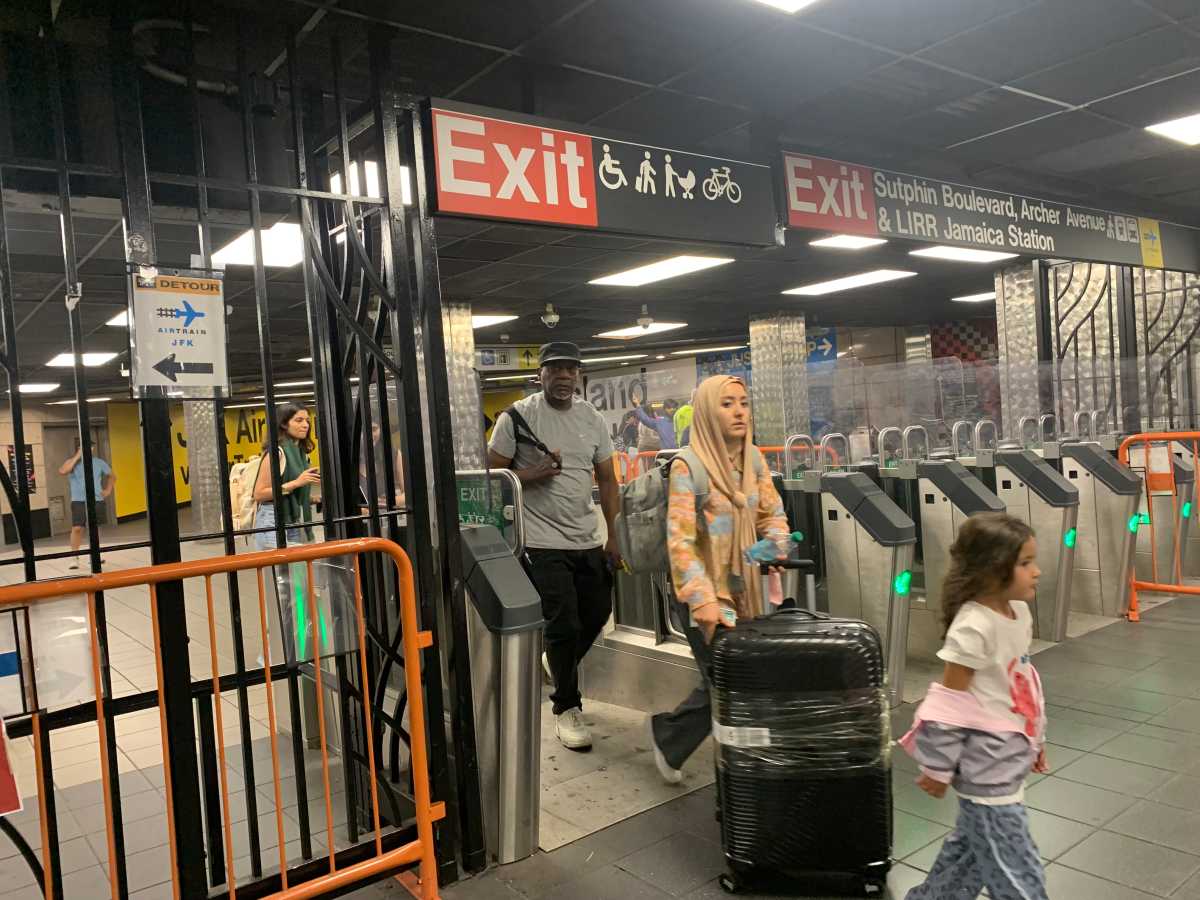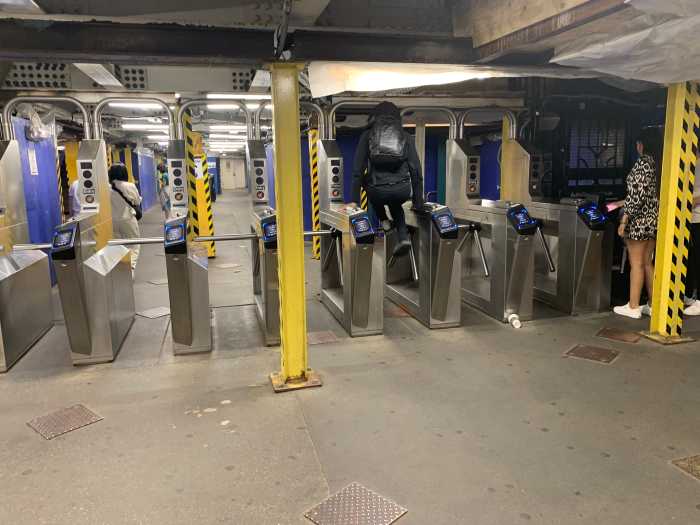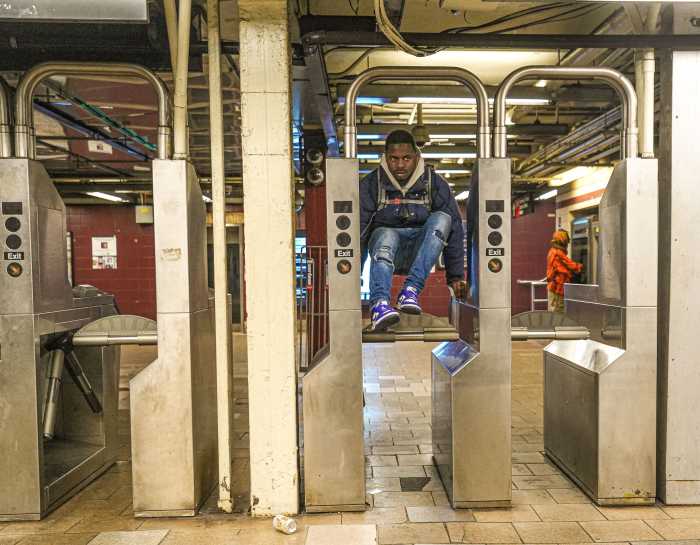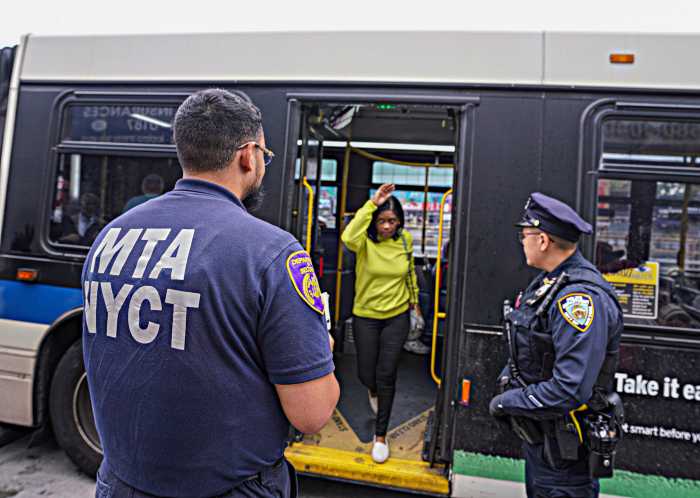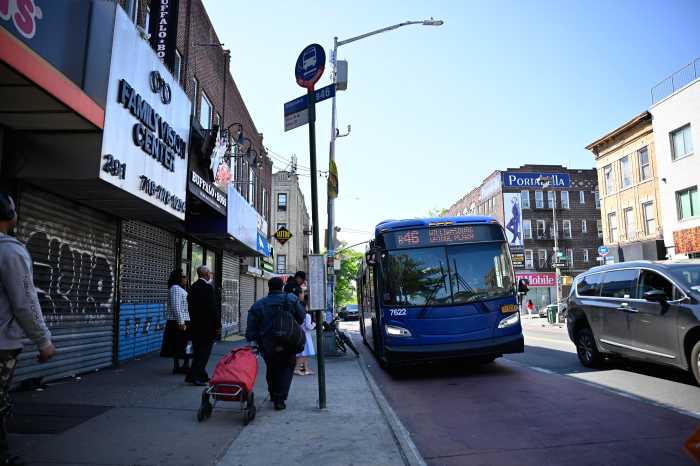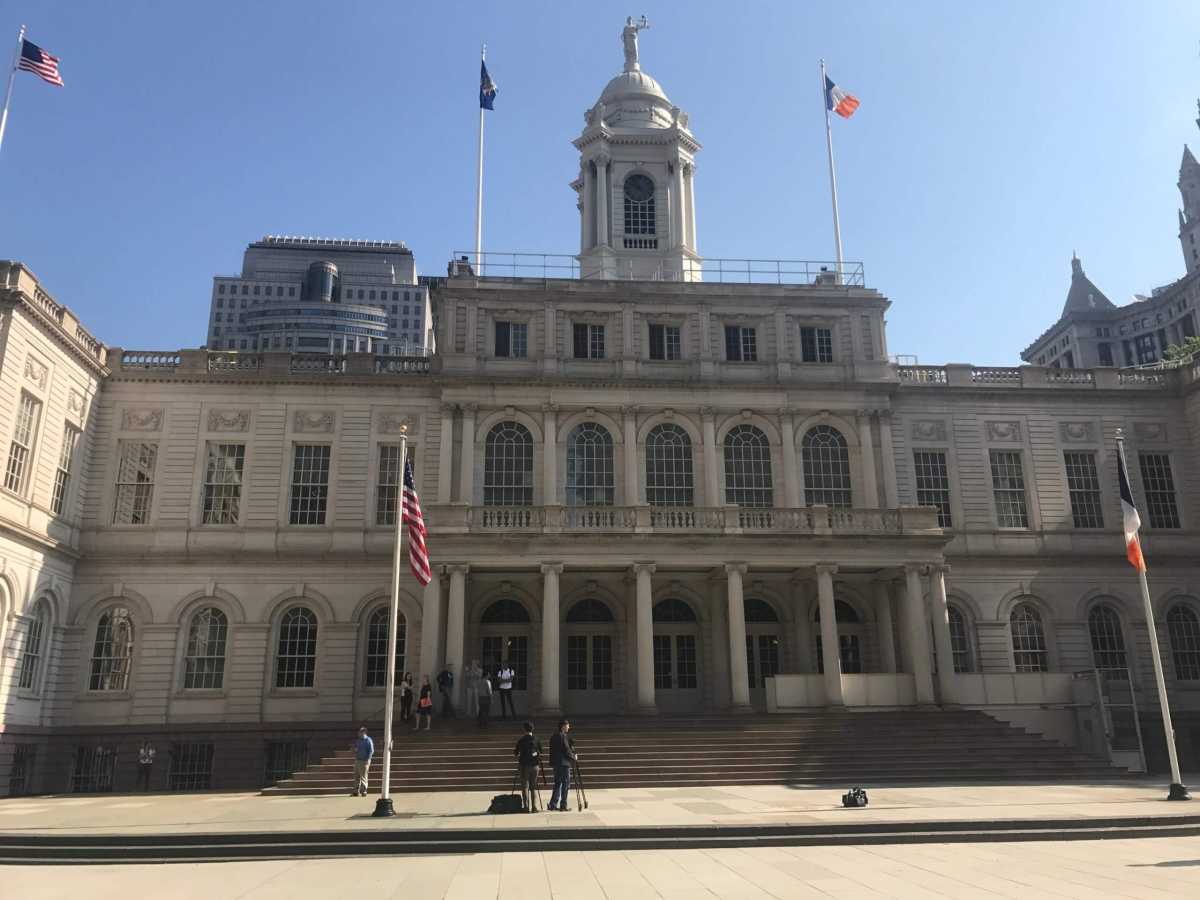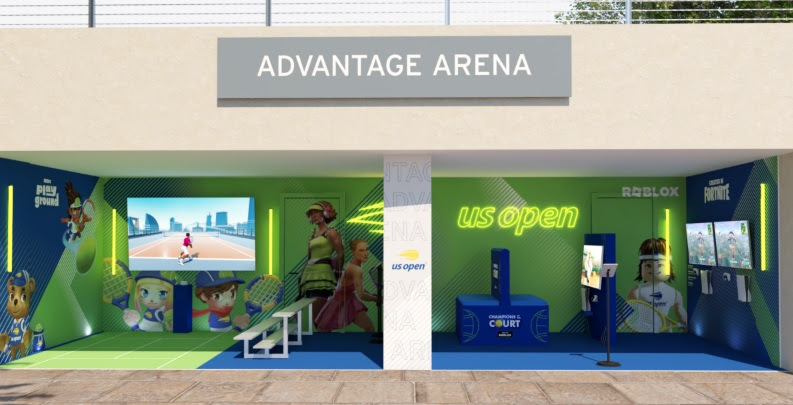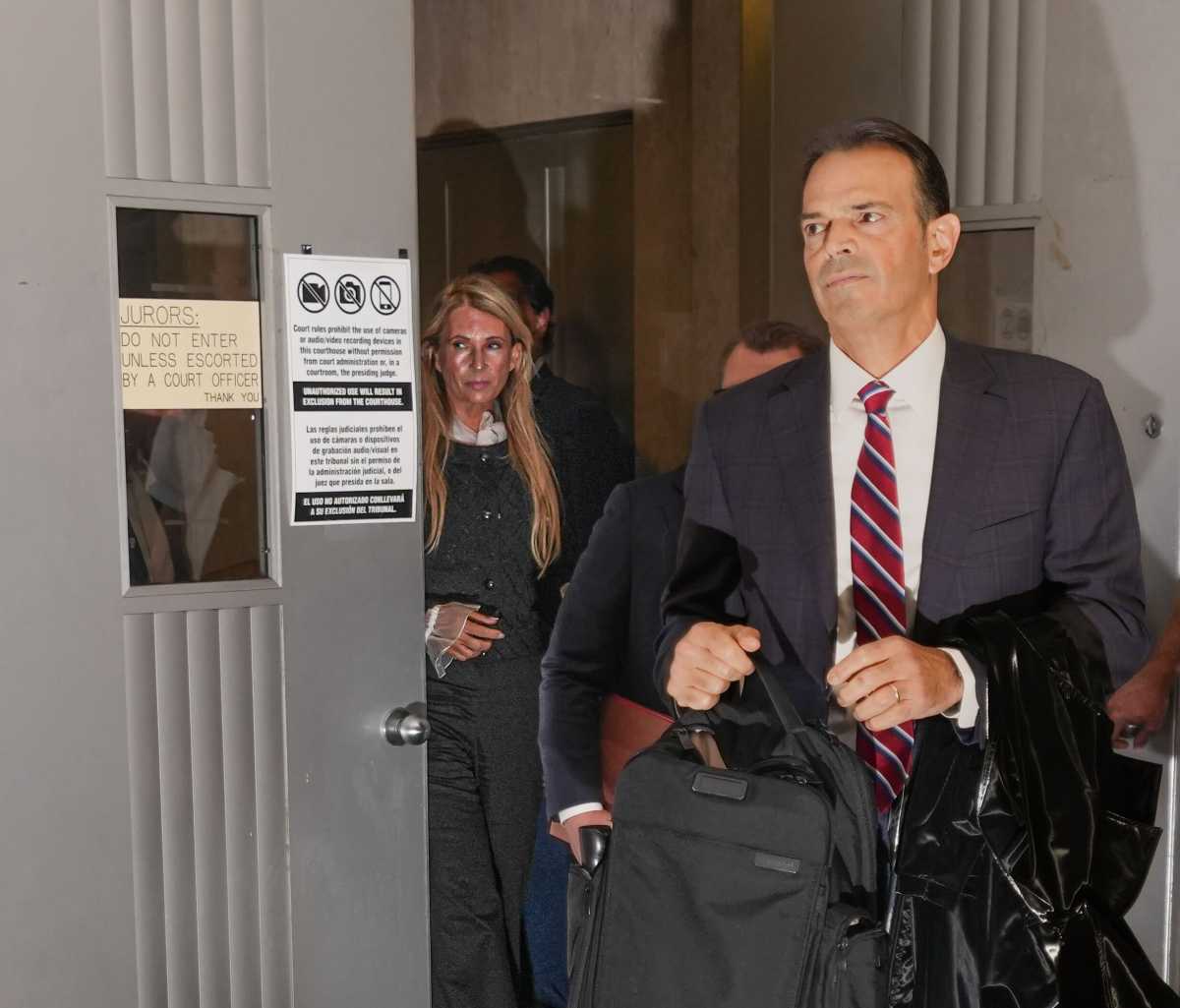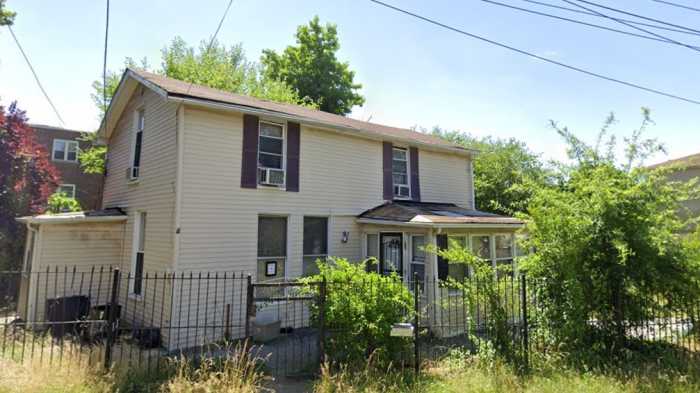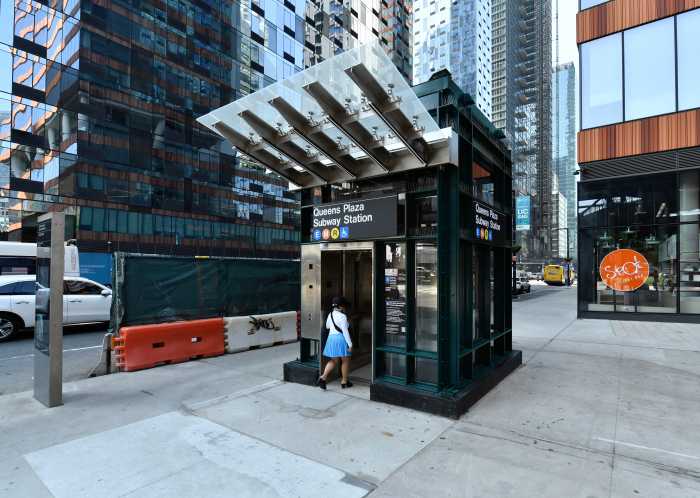It has been almost two years, but the MTA is keeping active a “prototype” modern gate system designed to stop fare evasion, but it is seemingly no match for anyone determined to cheat the system.
The high-tech fare gate system at the Sutphin Blvd. and Archer Avenue station in Jamaica was installed in December 2023, following a test run at the Atlantic Ave.-Barclays Center station in Brooklyn to see if the modern design would prevent fare evasion.
It hasn’t, at least according to amNewYork’s visit to the bustling transit hub that is home to the E, J and Z trains and the Long Island Rail Road (LIRR), on July 25. It is often the first subway stop travelers see when leaving JFK International Airport to traverse the city.
During amNewYork’s recent visit to the station, at least 10 people found their way through the wide-aisle array in 30 minutes to get a free ride.
People looking to avoid the $2.90 price tag penetrated the gates using “untraditional” methods, such as pushing the doors open and piggybacking at least two at a time. Commuters could even wave items in front of sensors to open the gates for fellow passengers.
Shockingly, the wider design of some of the gates seemed easier to break through than traditional metal turnstiles, possibly because their automatic doors take seconds longer to close shut.
Shortly after the gates were installed, the MTA had to make changes to the design, as people could access the sensors to open the gates without paying. The agency installed barriers to deter sensor triggering after a hack was posted on social media.
Today, people can still access the sensors, but the barriers make it more difficult.
Meanwhile, an MTA spokesperson said the agency is piloting other modern fare gates from four different vendors at 20 stations this year to help combat fare evasion. These gates are different from the ones at Sutphin Blvd.-Archer Avenue.
Attacking fare evasion ‘from all angles’
Fare evasion is a major problem for the MTA, and officials have said it costs the agency up to $800 million yearly in foregone revenue.
However, MTA Chair and CEO Janno Lieber, said in April that a multifaceted anti-fare evasion plan that includes new fare gate technology, more enforcement, and gate guards has led to a major recoup in fares since 2023.
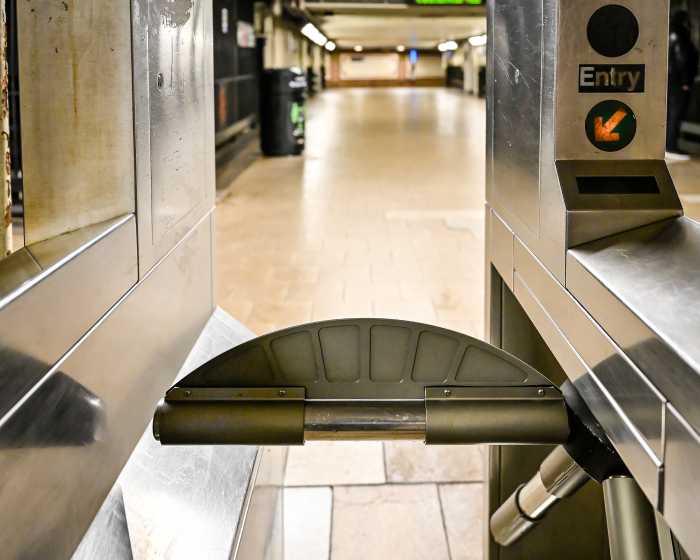
“For the last two years, we’ve been attacking fare and toll evasion from all angles, hardening the system against fare beaters, simplifying fare payment, raising awareness about discounted fares and, yes, doing more enforcement,” Lieber said. “Now those efforts are yielding positive results that will grow even more with the new modern fare gates that are coming.”
The agency reported that total fare revenue is trending up, reaching $5 billion in 2024 and increasing by $322 million from 2023.
Other stations plagued by fare evasion include the Metropolitan Avenue-Lorimer Street station in Williamsburg on the G and L lines, and the 61st Street-Woodside station, home to the 7 train and LIRR.
